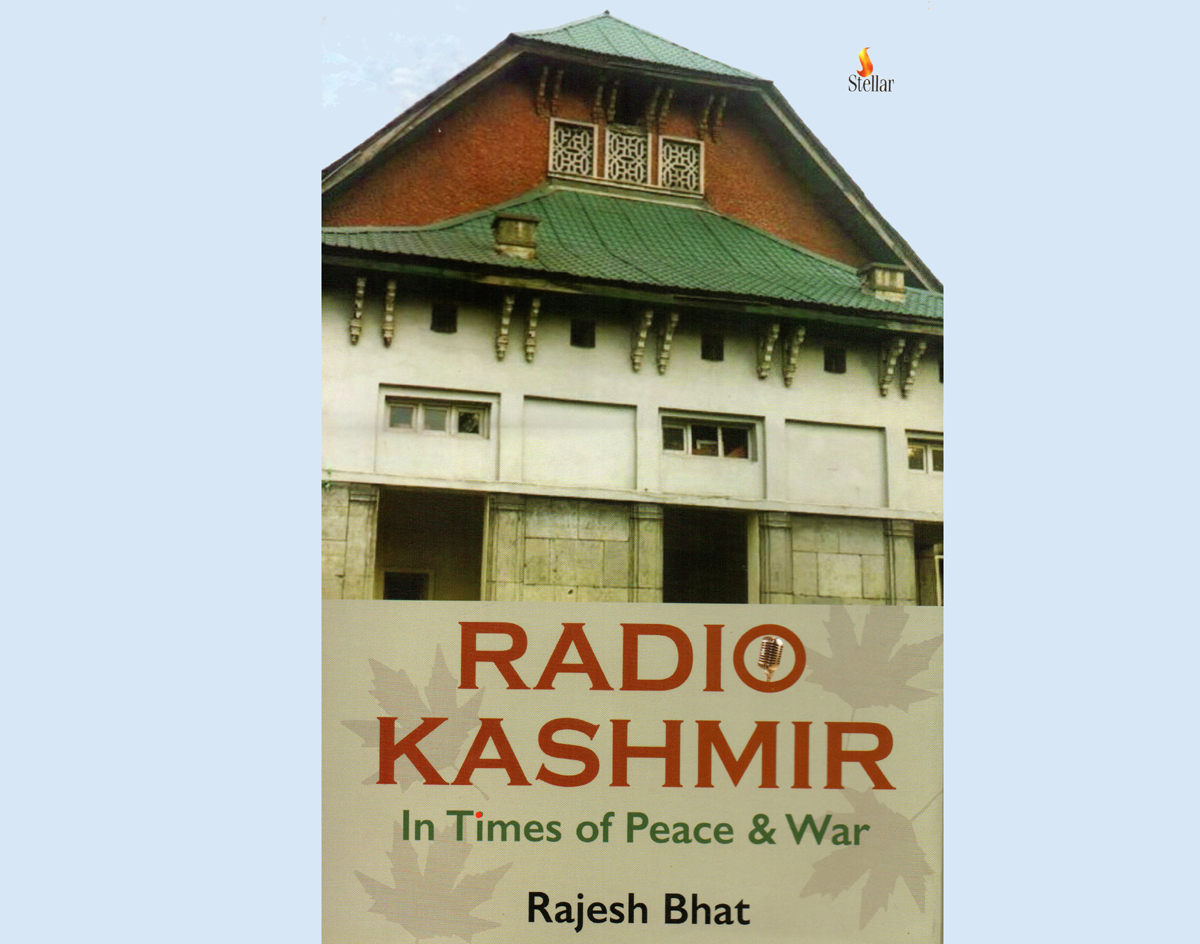Lalit Gupta
Name of Book: Radio Kashmir: In times of War & Peace
Author: Dr. Rajesh Bhat
Language: English
Publisher: www.stellarpublishers.com
Price Hard Cover Rs. 795
With an apt title creating a shining hook to catch readers eyes, Rajesh Bhat’s book ‘Radio Kashmir: In times of War & Peace’ is undoubtedly an important historical document that highlights Radio Kashmir’s vital role in safeguarding national interests.
The 297 pages book is based on premier research by the author who has experience of working as a producer of the content at Radio Kashmir Jammu and also the print and electronic media both in private and government sectors.
The book is divided into five chapters: Strategic Interest & Media: A Global Perspective, Pakistan’s Nefarious Propaganda in J&K via Radio Broadcast, India’s ‘Jawabi Hamla’ in Pre-Militancy Era Through Radio Kashmir, The Militancy Era of the 1990s & Media Vacuum in Kashmir, and Imperatives of Radio Kashmir.
The first chapter, Strategic Interest & Media,: A Global Perspective, explicates with examples, a) how media has always remained a powerful tool in shaping the strategic interests of the nations across the globe, b) the reinforced importance of radio during World War II for European as being the only tool to have a liaison with the armed forces and public, and also as a strong effective and strategic weapon to fight the wars, c) the role of All India Radio (AIR), as a sentinel guarding country’s strategic and cultural interests along with thwarting malicious designs of hostile neighbors, furthering the objectives of political nation building by national integration, and developing a “national consciousness”, fostering the long-term process of political modernization and nation-building, its matchless role during the wars of 1947, 1962, 1965 and 1971 in boosting the morale of security forces, and keeping people abreast of the situation along the borders.
The second chapter, Pakistan’s Nefarious Propaganda in J&K via Radio Broadcast, takes up how Pakistan’s in violation of Indo- Pak Agreement on Press, Radio, continues to unleash incessant malicious propaganda right from the time of signing of the Instrument of Accession by Maharaja Hari Singh with the Indian Union on October 26, 1947. It also lists propagandist programs broadcast by Radio Stations in Pakistan and Pakistan Occupied Kashmir’s so-called Azad Kashmir Radio, Trarkhal, between 1948-1955.
The chapter three, opens with history of Radio Kashmir, from the inauguration Jammu station by Maharaja Hari Singh on December 1, 1947, followed by Srinagar station on July 1, 1948, with the aim to counter the post-Tribal-Raid spread of distorted news and rumors by Pakistan official media from across the border, and to allay the misgivings of both inbound and outbound refugees.
With help of archival records, it also meticulously chronicles counter-propaganda programs of Radio Kashmir in Pre-Militancy Era, major and tumultuous international, national, state-level socio-political events, their influence on Radio Kashmir’s working, the nature, emphasis of the broadcast programs, and also the role played by different station directors in safeguarding the national interest during 1965 and 1971 wars.
Book’s chapter four, ‘The Militancy Era of the 1990s & Media Vacuum in Kashmir’, highlights the tenacity of the state-run media like Radio Kashmir and Srinagar Doordarshan, which in spite of tremendous pressure mounted by the terrorist by killing press and official media personals, continued to operate in the Valley. It also gives an extensive account of the series of programs created by Radio Kashmir to dispel and counter propaganda programs by Pak Radio stations. It also spotlights the number of innovative programs and I&B Ministry’s Strategic Plan for 2011-2017.
The concluding chapter, Imperatives of Radio Kashmir, while reiterating the strategic importance and position of Radio Kashmir, builds a case for a further strengthening of the unique institution along with other radio stations in the State. In order to effectively counter the web of Pakistan’s over and underground radio stations and FM channels with ‘high thumping frequencies’ in areas surrounding J&K which are operating with the sole mandate of spreading anti-India canard and disinformation amongst gullible masses of J&K. It further suggests the need to strengthen media units owned by Governments for meeting their strategic interests in an era where low-intensity wars are fought through media.
The well-produced illustrated book containing photos, facsimiles of letters, official correspondent, is a notable research-based work that while tracing the development of Radio Kashmir since in its inception also chronicles the tumultuous post-Independence history of Jammu and Kashmir.


